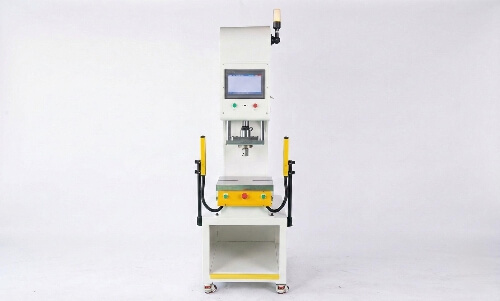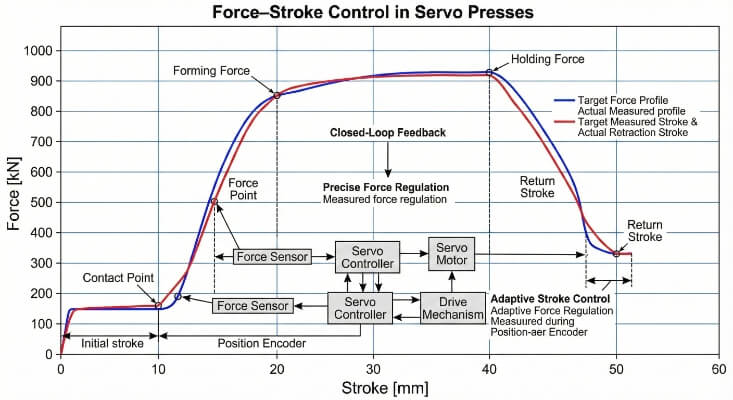Is your project focused on precision and efficiency? You’re likely debating whether to choose CNC milling or turning. Both are excellent machining methods, but each has its strengths. Choosing the right one can save you time and money and improve the quality of your product.
CNC milling is ideal for parts with complex shapes and features like holes, slots, or intricate contours. It uses a rotating tool to cut into the workpiece from different angles. CNC turning is best for round, cylindrical parts. The workpiece rotates while the cutting tool remains stationary. Both processes offer precision but differ in the way they handle material removal.
If you want clarity on when to use each process, continue reading. It will help you determine the best method for your next project.
What is CNC Milling?
CNC milling is a precise machining process that removes material from a workpiece. It is controlled by a computer program, which guides the movement of the cutting tool along different axes. This allows for high accuracy and versatility in manufacturing.
CNC milling uses rotary cutters to remove material from a workpiece. The workpiece stays stationary while the cutting tool moves along different axes. The process can create various shapes, from simple to complex, with tight tolerances.
Key Characteristics of CNC Milling
- Precision: CNC milling delivers high accuracy, making it suitable for complex parts.
- Flexibility: It can work with various materials such as metals, plastics, and composites.
- Multiple Axes: CNC milling machines often operate on 3 to 5 axes, providing more flexibility for intricate designs.
- Automation: The process is computer-controlled, which minimizes human error and increases repeatability.
Common Applications of CNC Milling
CNC milling is used in various industries, including:
- Aerospace: For parts that require high precision and strength.
- Automotive: To manufacture complex engine components.
- Medical: For creating custom prosthetics and implants.
- Electronics: For making housings and enclosures for devices.
Pros and Cons of CNC Milling
Pros:
- High Precision: It can achieve very tight tolerances.
- Complex Shapes: Capable of producing intricate parts with high accuracy.
- Versatility: Can be used with a wide range of materials.
Cons:
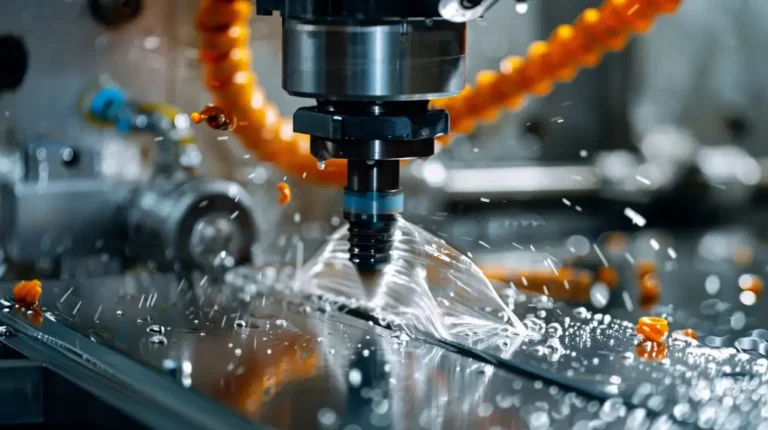
What is CNC Turning?
CNC turning is another popular machining process where the workpiece rotates while the cutting tool remains stationary. This process is ideal for creating parts with cylindrical or spherical shapes and is known for its efficiency and accuracy.
CNC turning uses a rotating workpiece and a stationary cutting tool to remove material. The machine operates along multiple axes to shape the material into cylindrical, conical, or spherical shapes. It is controlled by a computer program, ensuring consistent precision throughout the process.
Key Characteristics of CNC Turning
- Cylindrical Shapes: CNC turning is most commonly used for parts with rotational symmetry, such as shafts, tubes, and wheels.
- Efficiency: It is a highly efficient process, especially for parts that require mass production.
- Simplicity: The process is often more straightforward than CNC milling for round or symmetrical parts.
- Automation: Like CNC milling, CNC turning is computer-controlled, reducing human error and enhancing repeatability.
Common Applications of CNC Turning
CNC turning is widely used in various industries for parts that require a circular shape, including:
- Automotive: For manufacturing shafts, gears, and engine components.
- Aerospace: For making parts such as turbine blades and other rotational components.
- Medical: For producing parts like dental implants and surgical tools.
- Oil & Gas: This is used to create valves and fittings.
Pros and Cons of CNC Turning
Pros:
- Efficiency: CNC turning is faster than other machining processes for cylindrical parts.
- Cost-Effective: It is often more affordable for mass production of cylindrical components.
- High Precision: Offers excellent accuracy for parts with circular or rotational symmetry.
Cons:
- Limited to Cylindrical Shapes: CNC turning is best suited for parts with rotational symmetry, so it’s not ideal for complex shapes.
- Tool Wear: As with CNC milling, the cutting tools can wear out over time, increasing maintenance costs.
- Size Limitations: Larger parts may be more difficult or impractical to machine with CNC turning.
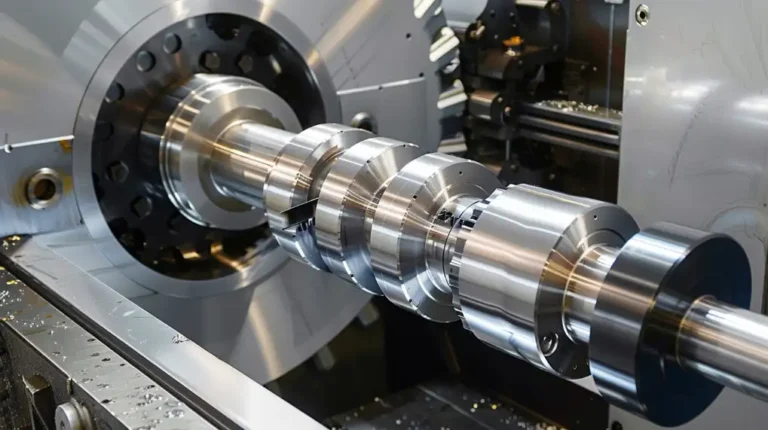
Key Differences Between CNC Milling and Turning
Understanding the differences between CNC milling and turning is essential when deciding between the two for your project. Here’s a breakdown of the key factors to consider when choosing the proper method for your parts.
Material Compatibility
Both CNC milling and turning can work with a variety of materials. However, they each excel with different materials. CNC turning is best for metals like steel, aluminum, and brass. It works well for parts with cylindrical shapes.
CNC milling is also suitable for metals, but it’s more versatile. It can handle plastics, composites, and non-metallic materials. Milling is especially useful when the part has complex shapes.
Complexity of Part Geometry
CNC milling is better for parts that need complex shapes, irregular surfaces, or multiple holes. It can create intricate designs that are ideal for custom or detailed parts.
CNC turning is best for symmetrical or cylindrical parts. These include shafts, gears, and pulleys. While turning offers high precision, it has limitations when it comes to more complex designs.
Workpiece Movement
In CNC milling, the workpiece stays still while the cutting tool rotates to remove material. This setup offers more flexibility for shaping and cutting different parts.
CNC turning works by rotating the workpiece while the cutting tool remains fixed. This is ideal for shaping cylindrical parts, but less suited for irregular shapes.
Cutting Tools
CNC milling uses various rotating cutting tools like end mills, drills, and face mills. These tools come in different shapes and sizes, allowing for the creation of a wide range of features like slots, holes, and contours.
CNC turning uses a fixed cutting tool that moves across the rotating workpiece. The tool typically uses turning inserts or drills, which are effective for shaping cylindrical forms.
Types of Parts Best Suited for Each Process
CNC milling is perfect for parts that require detailed designs, complex features, or non-cylindrical shapes. It’s commonly used in aerospace, automotive, medical devices, and custom manufacturing industries.
CNC turning is ideal for mass production of symmetrical, round parts such as shafts, rings, and bushings. It’s highly efficient for high-volume production runs where precision and surface finish are key.
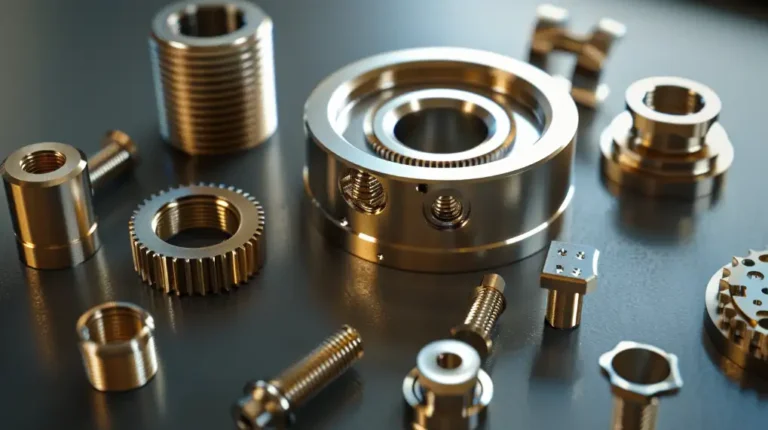
Choosing Between CNC Milling and Turning
Pick the proper process by matching it to your part’s requirements. Here’s when each method works best:
When to Choose CNC Milling?
- Your part has complex 3D contours or organic shapes
- You need precise flat surfaces or angular features
- The design requires deep pockets, intricate slots, or undercuts
- You’re working with tough materials (tool steels, titanium)
- The part has multiple machining operations on different faces
- You need tight tolerances on non-cylindrical features
- Prototyping or low-volume production where setup flexibility matters
When to Choose CNC Turning?
- Your part is primarily cylindrical or rotationally symmetric
- You need excellent concentricity or roundness
- The design features consistent diameters along an axis
- You’re producing high volumes of identical parts
- Cost efficiency is critical for simple geometries
- You need fast production of round parts
Conclusion
CNC milling and turning are both precise machining processes, but they are suited for different projects. CNC milling works best for parts with complex shapes, detailed features, and non-rotational designs. CNC turning is more efficient for producing cylindrical or rotationally symmetrical parts. The right choice depends on the part’s complexity, the material, and the production requirements.
Ready to start your next project? Contact us today to discuss your CNC milling or turning needs, and let us help you bring your designs to life with precision and efficiency.
More Resources:
CNC machining accuracy and tolerances – Source: 3ERP
Materials for CNC Machining – Source: Fictiv
Hey, I'm Kevin Lee

For the past 10 years, I’ve been immersed in various forms of sheet metal fabrication, sharing cool insights here from my experiences across diverse workshops.
Get in touch

Kevin Lee
I have over ten years of professional experience in sheet metal fabrication, specializing in laser cutting, bending, welding, and surface treatment techniques. As the Technical Director at Shengen, I am committed to solving complex manufacturing challenges and driving innovation and quality in each project.
- Higher Cost: CNC milling can be more expensive than simpler processes like turning.
- Limited to Certain Shapes: While it’s great for complex shapes, it may not be as efficient for long, cylindrical parts.
- Tool Wear: The cutting tools can wear out faster with certain materials, leading to additional costs.

What is CNC Turning?
CNC turning is another popular machining process where the workpiece rotates while the cutting tool remains stationary. This process is ideal for creating parts with cylindrical or spherical shapes and is known for its efficiency and accuracy.
CNC turning uses a rotating workpiece and a stationary cutting tool to remove material. The machine operates along multiple axes to shape the material into cylindrical, conical, or spherical shapes. It is controlled by a computer program, ensuring consistent precision throughout the process.
Key Characteristics of CNC Turning
- Cylindrical Shapes: CNC turning is most commonly used for parts with rotational symmetry, such as shafts, tubes, and wheels.
- Efficiency: It is a highly efficient process, especially for parts that require mass production.
- Simplicity: The process is often more straightforward than CNC milling for round or symmetrical parts.
- Automation: Like CNC milling, CNC turning is computer-controlled, reducing human error and enhancing repeatability.
Common Applications of CNC Turning
CNC turning is widely used in various industries for parts that require a circular shape, including:
- Automotive: For manufacturing shafts, gears, and engine components.
- Aerospace: For making parts such as turbine blades and other rotational components.
- Medical: For producing parts like dental implants and surgical tools.
- Oil & Gas: This is used to create valves and fittings.
Pros and Cons of CNC Turning
Pros:
- Efficiency: CNC turning is faster than other machining processes for cylindrical parts.
- Cost-Effective: It is often more affordable for mass production of cylindrical components.
- High Precision: Offers excellent accuracy for parts with circular or rotational symmetry.
Cons:
- Limited to Cylindrical Shapes: CNC turning is best suited for parts with rotational symmetry, so it’s not ideal for complex shapes.
- Tool Wear: As with CNC milling, the cutting tools can wear out over time, increasing maintenance costs.
- Size Limitations: Larger parts may be more difficult or impractical to machine with CNC turning.

Key Differences Between CNC Milling and Turning
Understanding the differences between CNC milling and turning is essential when deciding between the two for your project. Here’s a breakdown of the key factors to consider when choosing the proper method for your parts.
Material Compatibility
Both CNC milling and turning can work with a variety of materials. However, they each excel with different materials. CNC turning is best for metals like steel, aluminum, and brass. It works well for parts with cylindrical shapes.
CNC milling is also suitable for metals, but it’s more versatile. It can handle plastics, composites, and non-metallic materials. Milling is especially useful when the part has complex shapes.
Complexity of Part Geometry
CNC milling is better for parts that need complex shapes, irregular surfaces, or multiple holes. It can create intricate designs that are ideal for custom or detailed parts.
CNC turning is best for symmetrical or cylindrical parts. These include shafts, gears, and pulleys. While turning offers high precision, it has limitations when it comes to more complex designs.
Workpiece Movement
In CNC milling, the workpiece stays still while the cutting tool rotates to remove material. This setup offers more flexibility for shaping and cutting different parts.
CNC turning works by rotating the workpiece while the cutting tool remains fixed. This is ideal for shaping cylindrical parts, but less suited for irregular shapes.
Cutting Tools
CNC milling uses various rotating cutting tools like end mills, drills, and face mills. These tools come in different shapes and sizes, allowing for the creation of a wide range of features like slots, holes, and contours.
CNC turning uses a fixed cutting tool that moves across the rotating workpiece. The tool typically uses turning inserts or drills, which are effective for shaping cylindrical forms.
Types of Parts Best Suited for Each Process
CNC milling is perfect for parts that require detailed designs, complex features, or non-cylindrical shapes. It’s commonly used in aerospace, automotive, medical devices, and custom manufacturing industries.
CNC turning is ideal for mass production of symmetrical, round parts such as shafts, rings, and bushings. It’s highly efficient for high-volume production runs where precision and surface finish are key.

Choosing Between CNC Milling and Turning
Pick the proper process by matching it to your part’s requirements. Here’s when each method works best:
When to Choose CNC Milling?
- Your part has complex 3D contours or organic shapes
- You need precise flat surfaces or angular features
- The design requires deep pockets, intricate slots, or undercuts
- You’re working with tough materials (tool steels, titanium)
- The part has multiple machining operations on different faces
- You need tight tolerances on non-cylindrical features
- Prototyping or low-volume production where setup flexibility matters
When to Choose CNC Turning?
- Your part is primarily cylindrical or rotationally symmetric
- You need excellent concentricity or roundness
- The design features consistent diameters along an axis
- You’re producing high volumes of identical parts
- Cost efficiency is critical for simple geometries
- You need fast production of round parts
Conclusion
CNC milling and turning are both precise machining processes, but they are suited for different projects. CNC milling works best for parts with complex shapes, detailed features, and non-rotational designs. CNC turning is more efficient for producing cylindrical or rotationally symmetrical parts. The right choice depends on the part’s complexity, the material, and the production requirements.
Ready to start your next project? Contact us today to discuss your CNC milling or turning needs, and let us help you bring your designs to life with precision and efficiency.
More Resources:
CNC machining accuracy and tolerances – Source: 3ERP
Materials for CNC Machining – Source: Fictiv
Hey, I'm Kevin Lee

For the past 10 years, I’ve been immersed in various forms of sheet metal fabrication, sharing cool insights here from my experiences across diverse workshops.
Get in touch

Kevin Lee
I have over ten years of professional experience in sheet metal fabrication, specializing in laser cutting, bending, welding, and surface treatment techniques. As the Technical Director at Shengen, I am committed to solving complex manufacturing challenges and driving innovation and quality in each project.

